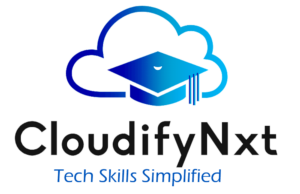
Prerequisite to Learn Power BI
Introduction
Power BI is an incredible tool for turning complex data into clear, interactive reports and dashboards. If you’re thinking about diving into Power BI, you might be wondering what you need to know before you get started. Let’s break down the essentials so you can hit the ground running and make the most out of your Power BI journey!
What You Need to Know Before Learning Power BI
- Basic Computer Skills
- Navigating Your Computer: Being comfortable with using a computer is crucial. This includes knowing how to manage files, install software, and use basic applications.
- Using Office Tools: If you’re familiar with Microsoft Office, especially Excel, you’ll have a head start. Power BI works seamlessly with Excel, so knowing how to handle spreadsheets will be beneficial.
- Understanding Data Basics
- Data Concepts: Get a handle on basic data concepts like tables, fields, and charts. This will help you understand how Power BI organizes and visualizes data.
- Data Sources: Know the types of data sources you might work with, such as spreadsheets or databases. Understanding how to connect and import these sources into Power BI is key.
- Excel Skills (Helpful but Not Mandatory)
- Data Manipulation: Skills like creating pivot tables, using formulas, and generating charts in Excel will make learning Power BI easier. The concepts are similar, so your Excel experience will translate well.
- Formulas and Charts: Being comfortable with Excel formulas and charts will help you grasp Power BI’s data visualization tools more quickly.
- Business and Analytics Knowledge
- Basic Business Insights: A good understanding of how businesses use data for decision-making will help you create more relevant and impactful reports.
- Analytics Basics: Familiarity with key analytics concepts like key performance indicators (KPIs) and metrics will enhance your ability to design insightful dashboards.
- Optional: Database Knowledge
- SQL Basics: Knowing some SQL can be handy if you need to query databases directly. Power BI connects to various databases, and understanding SQL can make data manipulation easier.
- Database Tools: Experience with database management systems can also help you understand how Power BI interacts with different data sources.
- Curiosity and Willingness to Learn
- Passion for Data: A genuine interest in data and how it can be used to drive insights is essential. Power BI is all about making data work for you, so being curious and analytical will serve you well.
- Problem-Solving Attitude: Embrace the challenges of learning a new tool. Power BI might throw some curveballs, but a problem-solving mindset will help you overcome any obstacles.
How to Get Started with Power BI
- Get Comfortable with Your Computer: Make sure you’re familiar with basic computer operations and software usage.
- Brush Up on Excel Skills: Review your Excel skills, especially those related to data manipulation and visualization.
- Understand Data Basics: Familiarize yourself with how data is structured and used.
- Install Power BI: Download Power BI Desktop from the official website and explore its features.
- Dive into Learning Resources: Find tutorials, online courses, and books that guide you through the basics of Power BI.
